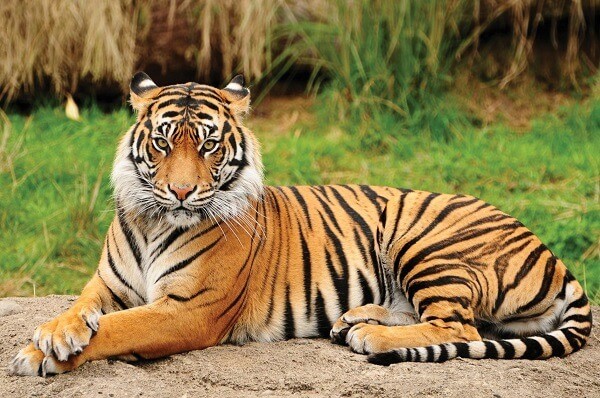
King Cobra (Ophiophagus hannah)
The king Cobra is the world's longest venomous snake, measuring up to 18 feet long.
This creature lives in the forests of India and Southeast Asia, where it lives on the ground and in trees. Its scales range from olive green to deep black, moving fluidly and serenely.
Despite their reputation as dangerous snakes, King Cobras display some surprising behaviors.
Females build nests for their eggs, a behavior typically associated with birds. Their nests provide a secure home for their offspring.
Unlike most venomous snakes, the King Cobra’s venom is so lethal it can kill elephants. Thankfully, this snake does not seek out confrontation. Instead, it flares its hood and lifts a third of its body off the ground, intimidating other animals, striking only as a last resort.
Additionally, the King Cobra eats other snakes, regulating their populations and maintaining the health of its ecosystem.
Tiger is king of the forrest
Tigers are the biggest wild cats in the world! They live in Asia. Bengal tigers live in hot grassy lands. A few Bengal tigers have white fur. Siberian tigers live in cold forests and their thick fur keeps them warm.
What tigers like best is lots of space to roam in…alone! They fight any other tigers that come near. Tigers are predators. They have amazing eyesight; they can see very well in the dark. When tigers spot a deer or an antelope, they crouch low in the grass. Their stripes help them hide. They slowly creep closer, and then they pounce! They have long razor-sharp claws that pop out when they attack.
Tigers are beautiful and majestic animals. Unfortunately, they are now an endangered species and it is estimated that there are only 5,574 tigers remaining in the wild worldwide.
Aspen, Quaking : Populus tremuloides
Aspen trees gorw fairly straight and become clear of lower limbs over time. Sometimes called trembling aspen because their leaves tremble in a light breeze due to their flattened petioles. Most extensive native range of any tree in North America. Rapidly recolonizes disturbed sites (after fire, logging, etc.) The largest tree in North Dakota is 70 feet tall with a canopy spread of 39 feet.




